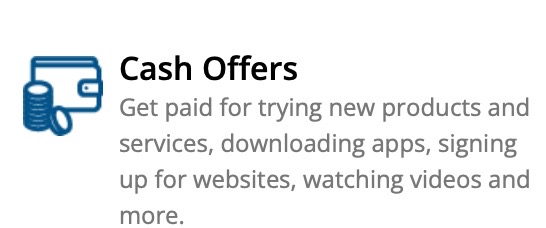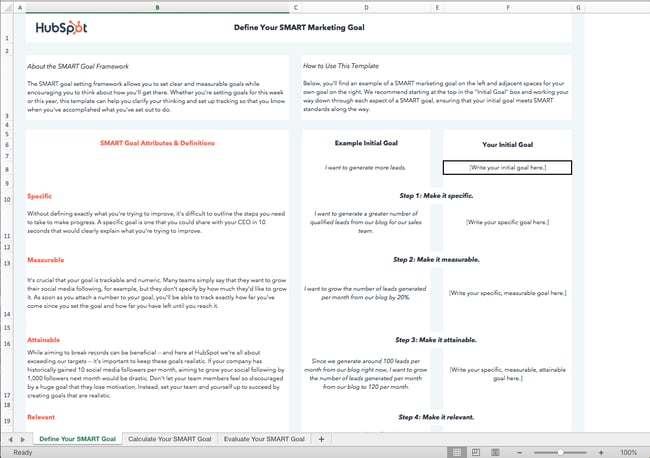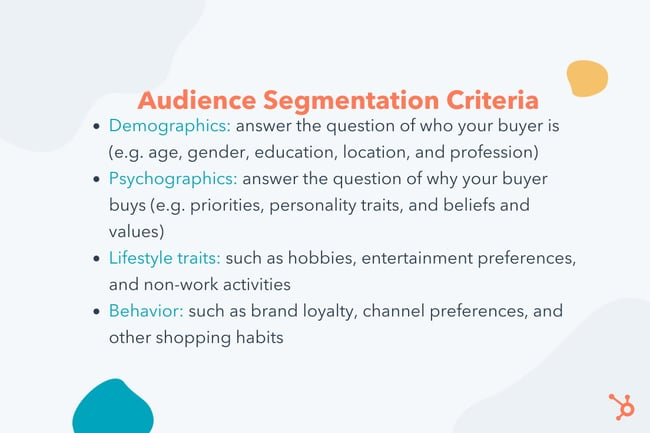Best Business Ideas – Whether the economy is slow, inflation is high or a recession is in full swing, you may be looking to make some extra cash. You may find some of the best businesses to start with little money are easier to get going than you think. For less than $1,000, you could have a side hustle that can help offset extra costs or rising prices.
20 Businesses To Start for Under $1,000
1. Bookkeeping Service
Technically, you only need a high school diploma to work as a bookkeeper, so this small business idea is accessible to anyone. You can take courses at a local community college or find online classes to learn what to do as a bookkeeper and earn a certificate.
Finding contract work as a bookkeeper will require you to put in a bit of effort marketing yourself on sites including Upwork, social media or even traditional methods, such as putting an ad in your local newspaper. Generally, you can charge $20 to $60 per hour, depending on your location and your experience.
What you need: Accounting software, limited liability company (LLC) business license, professional liability insurance, professional website
Approximate cost: $300 (to start); $75 per month (ongoing costs)
2. Tutoring Business
Another great choice that doesn’t require higher education (though it helps) is to work as a tutor in any subject in which you’re an expert. As long as you have a high school diploma, you can work with students who are struggling in particular topics. Where you work is up to you and the student (and their parents); you can teach students in your home or go to their house or a library to work together.
To get your name out there, consider using social media to spread word of mouth that you’re available; join Facebook and Nextdoor groups to connect with families locally. Create a website that includes a calendar where students or parents can book a time with you. The average price range for tutoring varies, but $20 to $100 is standard.
What you need: A website, LLC business license, home office
Approximate cost: $250; $30 per month (ongoing costs)
3. Consulting Business
Similar to a tutor, a consultant is an expert in their field. The biggest differences are as a consultant, you’re likely to be hired by a professional or a business to help guide them. Typically, consultants have a college degree and plenty of experience (or experience that equates to a degree).Networking is going to be your best bet for landing contracts as a consultant. Use professional social media, such as LinkedIn, go to local networking events for professionals and stay in touch with former colleagues. You should keep your personal website updated with contact information for your consulting business. Consultant fees vary wildly, depending on your area of expertise, so your rate may be $100 per hour or $500 per hour.What you need: Professional business cards, a website, LLC business licenseApproximate cost: $500; $30 per month (ongoing costs)
4. Delivery Service
If you’re looking to make extra cash after you get off work or you’re in between jobs, working for a delivery service such as Uber, Lyft, Grubhub or DoorDash can help. While it isn’t necessary to form an LLC for your side gig, it might be worth it for protecting your personal liability. Plus, there are a lot of monthly costs (maintenance, insurance, fuel) that you could write off on your taxes.The good news is that all you really need to work for a ride-sharing service or food delivery service is a vehicle, time, a mobile phone and a clean driving record. You don’t even have to invest in marketing yourself. You could make around $400 per week driving 20 hours, according to Uber.What you need: Vehicle, clean driving record, driver’s license, mobile phone, car insuranceApproximate cost: $500 monthly (assuming average car lease, insurance, mobile phone and car maintenance costs)
5. Online Store
Many people start an online store with just one product. You don’t need to have any technical skill or specialized training to be successful as an online seller, but it is a good idea to have some marketing and sales experience. To start, you need to find a product or products you want to sell, a great business name and a website.You’ll need to get a domain name, build a website and then market your products. It’s probably one of the more involved businesses to start, but if you’re successful, it could replace your full-time job. Keep in mind that an online store comes with a lot of ongoing costs, from keeping your website up and running digital ads to email marketing and transaction fees.What you need: An e-commerce website, products to sell, professional email address, domain name, business license, payment processor, sales tax IDApproximate cost: $500; $50 per month (ongoing costs)
6. Pool Cleaning Service
In warm climates, it’s common for houses to have pools, and pools need servicing year round. You will need some knowledge about pool chemicals and how to properly treat a pool to keep it clean, but you should be able to educate yourself on this. At the very least, you’ll need basic math skills to figure out how much of a chemical is needed for different sizes of pools.
Getting started with a pool cleaning service requires you to get equipment, chemicals and have a vehicle to transport those things from pool to pool. You can market yourself on sites such as Angi and Thumbtack, or go hyperlocal with Nextdoor or Facebook groups. Typically, pool businesses charge $80 to $150 per month, which includes weekly services for each pool.
What you need: Pool equipment, chemicals, small business insurance, LLC formation, invoicing software, vehicle
Approximate cost: $750; $100 per month (ongoing costs)
7. Graphic Design Services
If you have some digital artistic skill, you can start a graphic design business from home. You’ll have to find clients, but you can do so through websites including Fiverr or Upwork. Alternatively, you can rely on networking and word of mouth, so try social media or get some professional business cards to hand out when the topic comes up.
In addition to graphic design software such as Adobe Photoshop or Canva, you should create a portfolio website to show off your design skills. You can choose to create a personal website or a business site to sell services—either is fairly affordable if you choose one of the best website builders with the features you need. Graphic design can bring in about $25 per hour.
What you need: A website, graphic design software, business cards, business license
Approximate cost: $250; $30 per month (ongoing costs)
8. Pet Sitting Business
Turn your love of animals into a business that can make you a bit of money. Lots of people need pet sitting services from time to time and you can open your home to dogs, cats, birds and other animals that need someone to care for them. You may need to learn some specialized training such as animal CPR and how to administer medicine to different types of pets.
Make sure you get some pet sitter insurance to protect yourself and pet-proof your home. There are a few ways to get your name out there including putting up posters around your neighborhood or joining a site such as Care.com or Rover.com. If you’re a renter, this isn’t a side gig you can likely do, by the way.
What you need: Home with a yard, pet sitter insurance, flyers, a website
Approximate cost: $350; $60 per month (ongoing costs)
9. Property Management
There are a few ways you can get into property management: find part-time work as a property manager or start your own property management business. It doesn’t have to be a business in which you own the property you manage, rather you can offer your services as a liaison to connect contractors with residents or do the work yourself.
Although no degree is required, in some states you must be licensed to work as a property manager, so do the research before you jump into this line of work. You could offer your services to homeowners who want to rent out their houses or those who are using a service such as Airbnb or Vrbo.
What you need: A license (possibly), business license, a website, business cards
Approximate cost: $700; $30 per month (ongoing costs)
10. Personal Trainer
If you have a knack for nutrition and physical fitness, you could turn that into a career or a side hustle. People often look for personal trainers to help them get into shape and you don’t necessarily need an advanced degree to pursue this job. It can help to have a degree in sport science or certificate in fitness (there are multiple certificates out there you can earn).
You can start this business with little money—especially as it pertains to ongoing costs. You should strongly consider filing for an LLC and getting personal trainer business insurance to protect your assets. How much you spend on marketing depends on the route you want to take. Use social media, content marketing, email marketing or run digital ads to get the word out and start making $20 or more per hour.
What you need: Certifications, LLC formation, a website, email marketing software, personal trainer insurance
Approximate cost: $850; $60 per month (ongoing costs)
11. Auto Detailing or Mobile Car Wash
A great weekend business to start with little money is a mobile car wash service. All you really need to procure is a wet/dry vacuum, a pressure washer, a buffer, cleansers and microfiber towels. Aside from the equipment list, you should consider getting car detailing business insurance.
You’re going to need to spread the word about your mobile business, so it’s a good idea to submit your business information to Google Business Profile, Bing Places and other local directories. Make sure you have a website with at least your contact information, but you can also set up a website with appointments to make it easier for customers to book with you.
What you need: Car wash equipment, a website, small business insurance, LLC formation
Approximate cost: $800; $60 per month (ongoing costs)
12. Dropshipping Business
If starting an online store seems like a big investment of time and money, consider starting a dropshipping business. Dropshipping doesn’t require you to keep stock on hand or in warehouses—you simply purchase items at a discount as you sell them and the manufacturer or supplier ships products on your behalf.
You can create a website to showcase the products you want to sell or choose a marketplace such as Amazon or eBay. It’s still important to put in the time and effort to be successful, and most of this will be by way of marketing, choosing the right items to sell and creating the listings.
What you need: Dropshipping supplier, a website, business license, sales tax ID, payment processor
Approximate cost: $100; $30 per month (ongoing costs)
13. Virtual Assistant
A lot of professionals hire virtual assistants (VAs) to help them organize emails and documents, schedule appointments and other administrative work they don’t have time for themselves. You can often find part-time work as a VA to make a bit of extra money on the side (or full time if you want). Consider joining a virtual assistant service to get placed with a company if you don’t want to work independently.
You don’t necessarily need experience to find work as a VA, but it helps to have good organizational and communication skills. If you’ve worked previously as an administrative assistant, a VA position could work well for you and you get to work from home. The average rate for a VA is usually around $15 to $20 per hour.
What you need: A computer, a good internet connection, a website
Approximate cost: $550; $130 per month (ongoing costs)
14. Staffing Business
Staffing businesses serve as the middleman between employers and prospective employees. They help businesses find great candidates, and in return, businesses pay the staffing agency a referral fee (often as a percentage of the new hire’s annual salary). It could be ideal for those that are well-connected with a large professional network and who enjoy talking to people. It is also a business that can be started at home for those focusing on filling fully remote positions.
While those that operate staffing agencies typically come from a background in staffing or human resources, it is possible to start a staffing business without prior experience. However, as with anything, do expect a steeper learning curve if you do not have experience in the field as you will need to learn about the industry from landing clients and attracting candidates to contracts and billing.
What you need: You may need licenses and permits (varies by state), business insurance, website, internet
Approximate cost: $700
15. Tour Provider
The minimum requirements to become a tour guide include a high school diploma and an intimate knowledge of the area (or nearby area) in which you live. Tour guides don’t always drive clients around, but it’s a good idea to have a vehicle and a driver’s license. There’s such a thing as walking tour guides in areas known for hiking and such.
Many local tour guides start off on their own and post listings on tour guide websites with their rates. You can also find websites that will do marketing for you for a small fee. To get started, research your area to find out whether you need a license to work as a tour guide. As a tour guide, you can usually make $20 to $50 per hour, depending on your area.
What you need: A license (maybe), a car and driver’s license (optional), liability insurance, marketing materials, a website
Approximate cost: $250; $60 per month (ongoing costs)
16. Website Design Agency
If you have experience designing websites (and even if you don’t), you can turn it into extra cash (or a full-time job). Find one of the best web hosts to get a really low rate and create multiple websites. Alternatively, you could choose a website builder to help you create a website quickly.
It’s a good idea to learn how to use graphic design software, WordPress, coding (HTML and CSS) and some search engine optimization (SEO) tools. Marketing is a big part of being a website designer, so be sure to use sites such as Fiverr, Upwork and online directories to spread the word about your services. A website designer can make around $20 to $50 per hour.
What you need: A website, web host or site builder, subscription to graphic design software
Approximate cost: $200; $90 per month (ongoing costs)
17. Professional Cleaning Service
Housekeepers are often in need by busy professionals, people moving out of a rental and families. You don’t need much to get started, but you will need a strong work ethic, transportation and your own cleaning supplies and equipment. Check local laws to see if you need a business license to operate.
If you plan to do the work yourself, you don’t have to register a business, but it’s a good idea to have an LLC at least because it can protect your personal assets should anything go wrong. Liability insurance is more of a necessity in the event anyone is injured on the job. House cleaners make around $15 to $25 per hour.
What you need: Cleaning supplies, vacuum cleaner and other cleaning equipment, vehicle, business license (maybe), business registration, a website, business liability insurance
Approximate cost: $750; $60 per month (ongoing costs)
18. Open an Etsy Shop
Lots of people have talents and skills that translate into goods to sell. You can turn your hobby into a money-making business with very little money to start. Whether you crochet or knit, paint or sculpt or print fun T-shirts, you can sell homemade goods on Etsy.
Etsy doesn’t charge you anything to start a shop, but it does charge you per listing and fees when you make a sale. How much you can make with an Etsy shop depends on what you’re selling and how popular your items are. It’s also difficult to say how much it will cost you to get started because it depends on the price of your materials.
What you need: Materials for items, marketing plan
Approximate cost: $0 to $999 (this really depends on how much your materials cost)
19. Lawn Care and Gardening Service
A popular business to start with little money is a landscaping business. It’s a good idea to have some experience mowing lawns, clipping hedges, gardening and using a weed whacker. The equipment you’re going to use likely requires you to have a truck to haul it from yard to yard, so this idea is best for you if you already have one.
To start, you’ll have to invest in a lot of pricey equipment, but you can likely find used pieces to lower the cost. Insurance is necessary, and you should register your business to protect your personal assets. Keep in mind you’ll need to pay for fuel, maintenance and marketing as ongoing costs. Landscapers’ rates usually range from $20 to $40 per hour.
What you need: Equipment, truck, business insurance, LLC formation, website
Approximate cost: $999; $100 per month (ongoing costs)
20. In-Home Caregiver
Although most caregivers work for agencies, you can work as an independent caregiver. In most states, you need certification, but it usually isn’t necessary to be a certified nursing assistant (CNA). Your duties are likely to include shopping, light housework, cooking and transportation to appointments, for example.
At the very least, you’ll need a high school diploma, a valid driver’s license, a clean driving record and CPR certification. You should have transportation for a lot of the tasks you’re likely to do. Hourly rates for independent caregivers usually average out to $30 per hour.
What you need: CPR certification, business insurance, registered business, vehicle
Approximate cost: $150; $60 per month (ongoing costs)
Business Formation Resources
Whenever you start a business, there are a few things you need to do first to protect your personal and business assets. Setting up a limited liability company (LLC) is a good first step. Registering your business makes you more legit in the eyes of clients, too.
All new business owners should have a website with important information, including contact email address and phone number and a description of what they do. Some businesses would do well to find a website builder that lets clients book appointments from their site.
Bottom Line
Starting any new business is not an easy endeavor, but it doesn’t have to be a huge financial investment. The best business to start with little money is one you already have experience doing, whether it’s mowing yards, designing websites or helping students with a subject in which you’re an expert.























 TrueNorth is a marketing management platform built to help you hit your marketing goals. Built specifically for marketing teams, TrueNorth turns your marketing strategy into a visual projection of your growth, which is used to create monthly milestones that help you stay on track.
TrueNorth is a marketing management platform built to help you hit your marketing goals. Built specifically for marketing teams, TrueNorth turns your marketing strategy into a visual projection of your growth, which is used to create monthly milestones that help you stay on track. Everything on Monday.com starts with a board or visually driven table. Create and customize workflows for your team and keep groups, items, sub-items, and updates synced in real-time.
Everything on Monday.com starts with a board or visually driven table. Create and customize workflows for your team and keep groups, items, sub-items, and updates synced in real-time. SEO continues to be a huge factor in the successful ranking of your website.
SEO continues to be a huge factor in the successful ranking of your website.
 Need to optimize your website this year? Consider getting started with Crazy Egg. You’ll be able to identify “attention hotspots” on your product pages, track ad campaign traffic on your site, and understand if shoppers are clicking where you want them to.
Need to optimize your website this year? Consider getting started with Crazy Egg. You’ll be able to identify “attention hotspots” on your product pages, track ad campaign traffic on your site, and understand if shoppers are clicking where you want them to.





